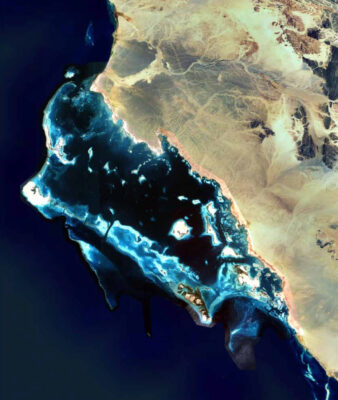Now though, a research team from the University of Miami Rosenstiel School of Marine, Atmospheric, and Earth Science thinks they’ve come up with a better technique. And it involves heading into space!
The researchers have been experimenting with the idea of using satellites to map coral reef biodiversity on a worldwide scale to show that areas of high habitat diversity also have high species diversity.
The concept has been successfully used on land-based environments for a few years now, but to test it in an ocean environment, the team took satellite-derived reef habitat maps from 880 locations distributed on a global transect through the Atlantic, Pacific, and Indian Oceans.
The satellite data was combined with in-water diver surveys of fish and coral species collected by the Khaled bin Sultan Living Oceans Foundation’s (KSLOF) Global Reef Expedition, a massive ten-year survey to map the world’s coral reefs.
From these, the scientists measured the complexity of the patterning of seabed habitats, which correlated with the diversity of species present in each. This relationship was the same across the Atlantic, Pacific, and Indian Oceans, which – according to the report – can be used as a proxy for reef biodiversity.
